Small-boat snobs, take heart. A census of any marina will reveal hundreds of large auxiliaries sitting idle most weekends, while easy-to-use kayaks and canoes are proliferating. Are very small sailboats the next big thing? A friend of mine with a serious cruising sailboat confided that lately, most movements of his boat are in the service of reaching a protected creek or harbor where his young family can deploy a fleet of kayaks and sailing dinghies.
Tiny sailboats offer ridiculous fun in proportion to their cost. For my purposes, “tiny” means “light enough to lift on top of my car even when I’m tired.” The lightest 15-footer requires some muscle to manage on and off the water; 8-or 10-footers require almost none. If I’m tired I won’t consider doing the trailer dance with a 15-footer, much less getting my 6,000-lb Folkboat under way.
At about 9′ and 75 lbs, Karl Stambaugh’s Weekend Dinghy is in my “tiny sailboat” sweet spot. An adult of average strength can cartop it on anything with roof racks. If you have a pickup truck or van, it takes seconds to slide a little flat-bottomed skiff like this into the back for transport. With Karl out of town I had a chance to test this. He left the boat in his yard for me; I lifted the boat by the center thwart and swung it onto my shoulder for the 15-yard walk to my Ford Econoline van. I lowered the stern to the ground, propped the bow on the floor of the van, and slid the boat in. It took about 40 seconds. With practice, there’d be smoother choreography and less danger to my back or the boat’s finish. The cargo van swallowed the 9′ dinghy whole, the bow just reaching the front seat.
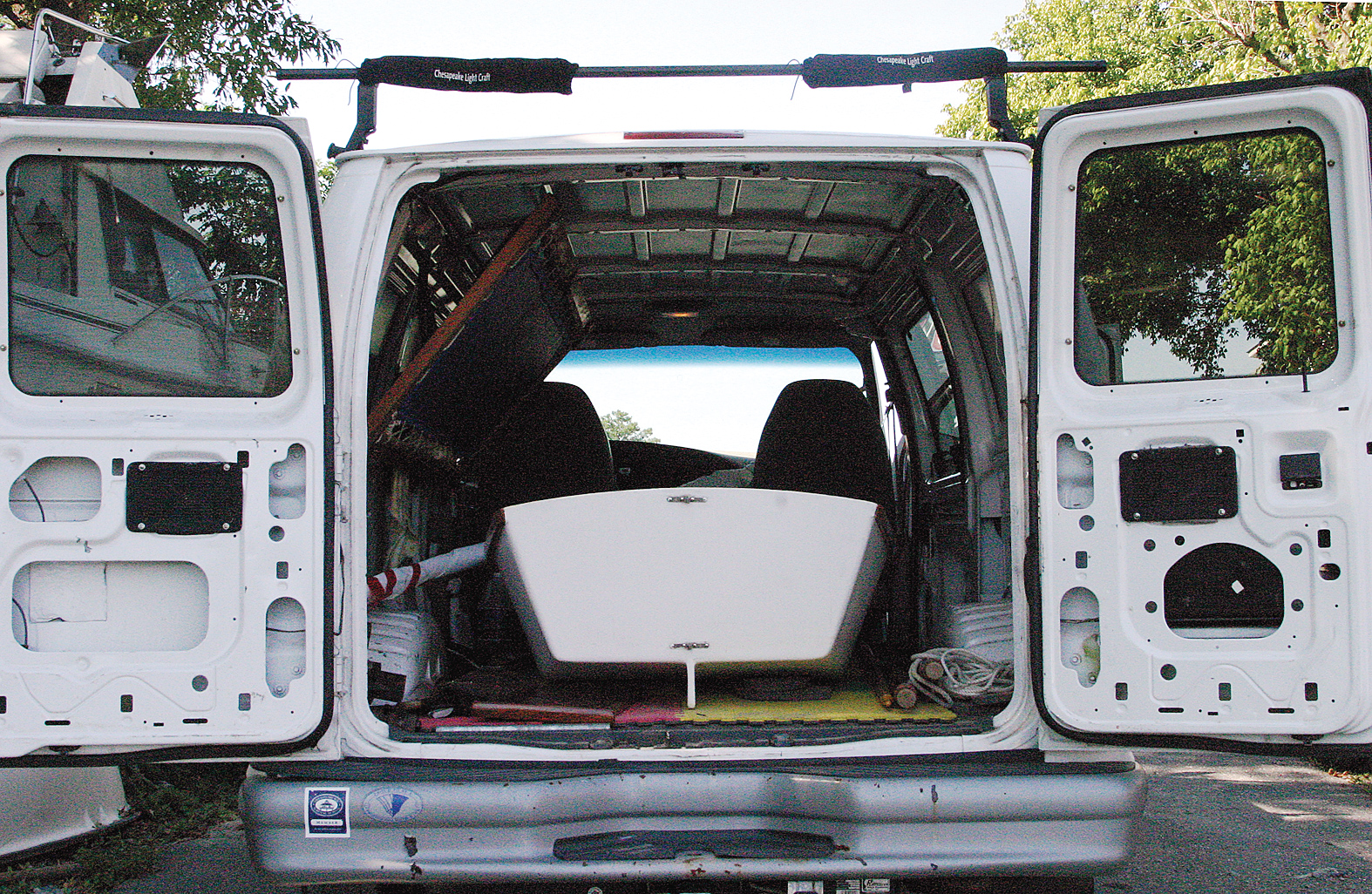 Photo by John C. Harris
Photo by John C. HarrisAt 9′ long and a shade over 3′ wide, the Weekend Dinghy will fit on top of most—or inside of some—vehicles.
At the marina where I keep my Folkboat, I eased the Weekend Dinghy out the back of the van and over the edge of the dock. Oars, sprit, water bottle, sandwich, and iPod followed. To get it out of the way, I mounted the mast in its step for the trip across the anchorage.
Most dinghies this size are prams, to yield maximum waterplane for stability and volume. Stepping down from the dock, I was reminded that this boat is pointy at one end—step in the narrow bow section, and the dinghy will go transom-over-chocks, wetting my trousers and voiding the iPod warranty. Be careful to step to the center in 70-lb boats! The Weekend Dinghy’s bow is handsome and improves handling on all points, but embarking crew should think of the boat as a 7′ 6″ pram with a bow fairing on it.
At the first oar stroke, I appreciated the extra bow. While a pram dinghy will make a sort of slushing noise under way, the Weekend Dinghy glides silently. I crossed the anchorage and passed my gear into the Folkboat. I stowed the 13′ 3″ mast and sail on the Folkboat’s port side deck. The mast isn’t much longer than a whisker pole, and not at all in the way even aboard the 26′ Folkboat.
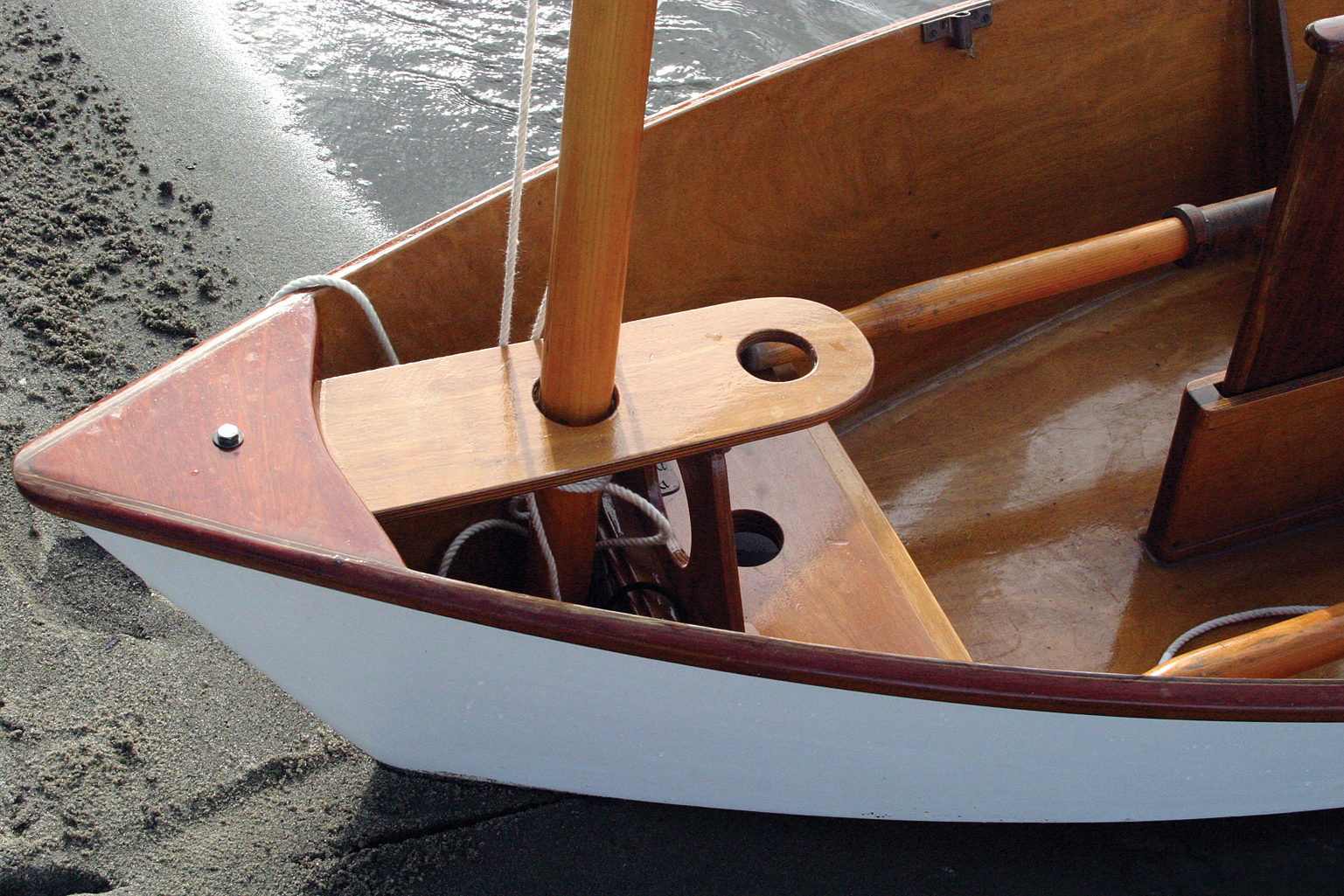 Photo by John C. Harris
Photo by John C. HarrisThe Weekend Dinghy may be kept a simple rowboat, or rigged to sail.
As I tacked down the Rhode River in 8–10 knots true, the Weekend Dinghy towed without fuss. So little fuss, even, that when the painter slipped off the stern cleat, I didn’t realize it was gone. Nearby yachts started to swarm around the handsome dinghy bobbing in the channel, thinking it perhaps abandoned. Awakening, I crash-jibed and tacked back up, the distance affording me a chance to appreciate the Weekend Dinghy’s deep sheer from a distance, and to wonder how quickly I could build a replacement for Karl if the dinghy was plowed under by the monster sedan cruiser that was bearing down in the channel.
I could build one pretty fast. Quick building, in fact, was in Stambaugh’s design brief. Quarter-inch plywood sides are stitched to a 3⁄8″ bottom using plastic wire ties. Thickened epoxy bonds and seals the seams and forgives almost any tyro mistake. The three seats are 1⁄2″ plywood, and a single plywood frame amidships spreads the sides to a beam of 40″. A mahogany rail stiffens the sheer, and fiberglass fabric sheathing outside contributes to rigidity. A breasthook and quarter knees provide excellent handholds, and their compound bevels aren’t going to deter an amateur. The Weekend Dinghy’s near-instantaneous assembly has made it a popular subject for “family boatbuilding” glue-a-thons, where parent-child teams build a basic hull in three days.
Rowing, towing, and lost-dinghy exercises completed, I sailed back up the Rhode River and anchored off a popular beach. I rowed ashore for a rigging session. The Weekend Dinghy begins life as a basic rowing dinghy, and may be converted to sail with the addition of a daggerboard trunk and bolt-in maststep. Stambaugh’s mast partner scheme folds up and stows away in a few moments. You can have it in and out in a flash, clearing the forward thwart for rowing with a passenger seated astern. The 33-sq-ft leg-o’-mutton sail is laced to the mast, and there’s a sprit boom. No fiddly hardware; everything is lashed, keeping the rigging cheap and simple. In less time than it took to unbutton the Folkboat’s mainsail cover, I had everything set and drawing.
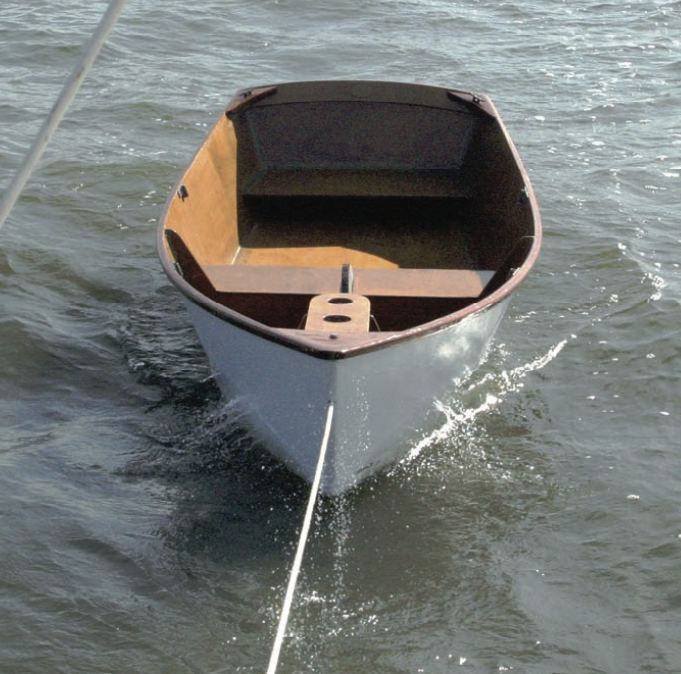 Photo by John C. Harris
Photo by John C. HarrisThis boat tows without fuss. It’s an ideal sailing tender from which to explore quiet anchorages.
For absolute simplicity of construction, the rudder is a plate of 1⁄2″ marine plywood. Simple rudders like this suit family boatbuilding events and impatient builders. But as I hung over the transom in deep water off the beach, trying to line up the pintles and gudgeons as the boat backed down under sail, it occurred to me that builders sailing off a beach would do well to spend an extra hour or two on a kick-up rudder.
The Weekend Dinghy bore off and sped away under sail with assurance. Light and easily driven, the dinghy’s handling was crisp on all points. Such a light hull doesn’t like being pinched, but I tacked through 90 or 100 degrees and didn’t hang up in stays. The sprit rig’s vanging effect yielded docile off-wind handling, with no twist in the sail to set the boat rolling.
This is carefree sailing. In really small sailboats, the weight of an adult overpowers the small sail in modest breezes. Keep your weight low and centered, and it’s very hard to have a mishap. Still, stay in warm water. Unless you glue some foam under the seats, there’s no positive flotation. If a boat this small swamps, self-rescue is unlikely, so keep a weather eye and don’t get too far from shore.
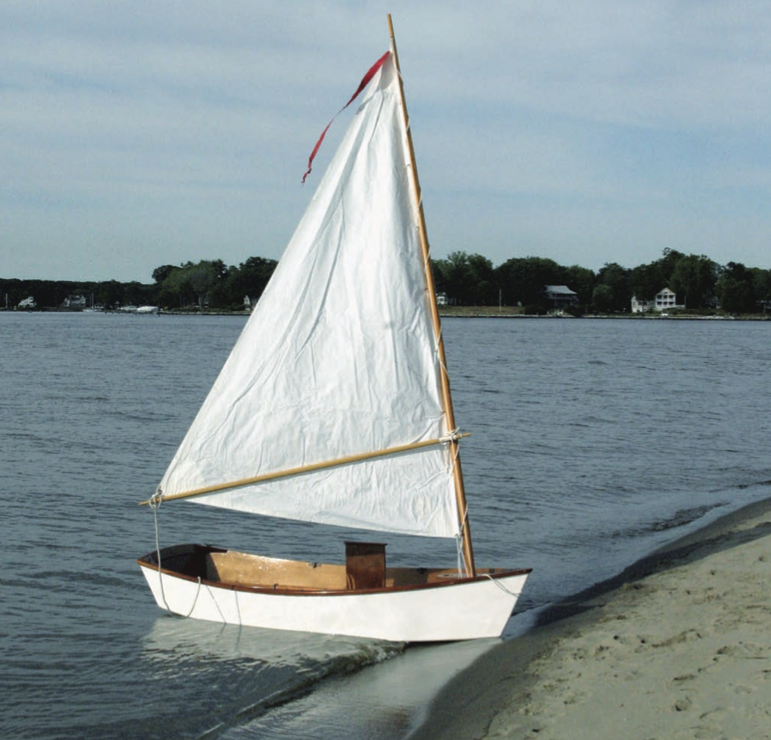 Photo by John C. Harris
Photo by John C. HarrisThe Weekend Dinghy, designed by Karl Stambaugh, is a quickly and simply built stitch-and-glue skiff.
Boats like this are “personal watercraft” for the enlightened. Sitting on the floor with the side panel providing good back support, you are inches above the water and 21⁄2 knots feels like 9 in a big auxiliary sailboat. In fact, 21⁄ 2 knots is about what you’ll see in light air. Think of that as a nice walking pace—you can cover a lot of miles on a Saturday afternoon. The boat’s too small to plane, except perhaps in heavy air with a 45-lb child prodigy sailor at the helm. But it’s such fun for a single adult. Bring a seat cushion, and disappear for hours of shoreline and marina exploration, burning no oil and bothering no one.
Alas, 8 out of 10 readers will ask if they can mount an outboard. Because the transom is lightly built and there is no integral flotation, the short answer is “No.” The long answer is, “Why would you sully such a boat with an outboard?” A noisy, expensive outboard motor that costs more than the materials is crazy on a boat that rows and sails this well. A sputtering outboard dinghy shatters the tranquility of a beautiful anchorage, whereas a nice wooden rowing and sailing dinghy enhances it.
A fleet of Weekend Dinghies darting around the harbor on the evening breeze is a beguiling vision. A cruising family should have two, or even three or four of these in tow, to be set loose upon reaching the anchorage for impromptu races and fleet actions. Sailors young and old will sharpen their skills. They may even give up the marina bills for good and spend their weekends in wholesome dinghies like this one.
This Boat Profile was published in Small Boats 2008 and appears here as archival material. Plans and kits for the Weekend Dinghy are available from Chesapeake Marine Design.
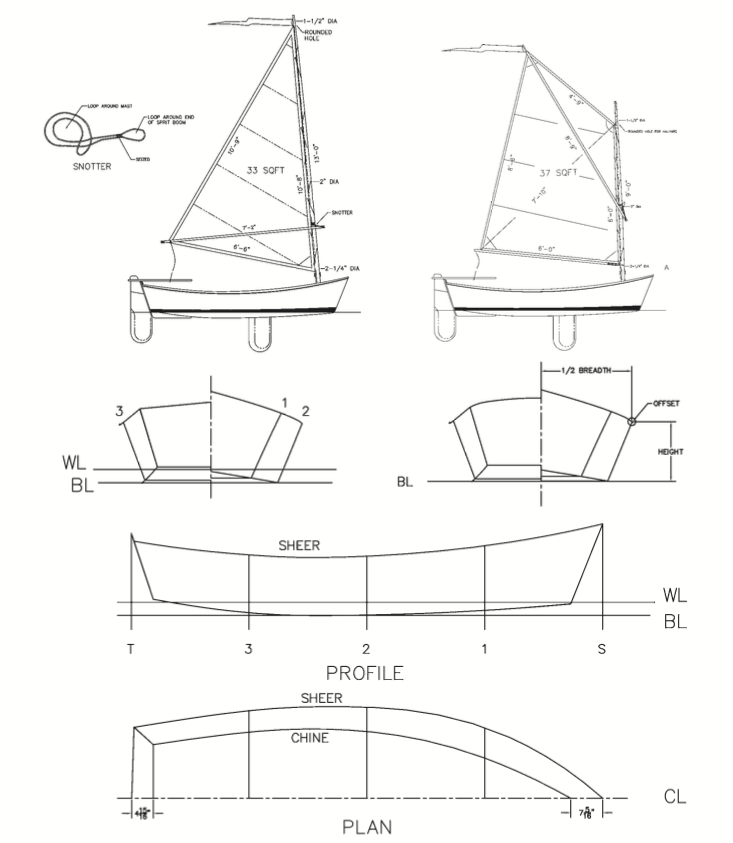
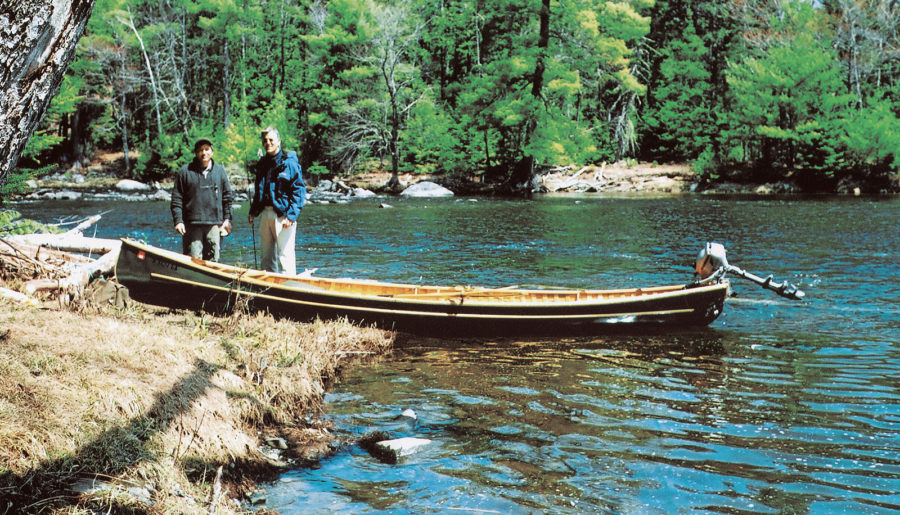
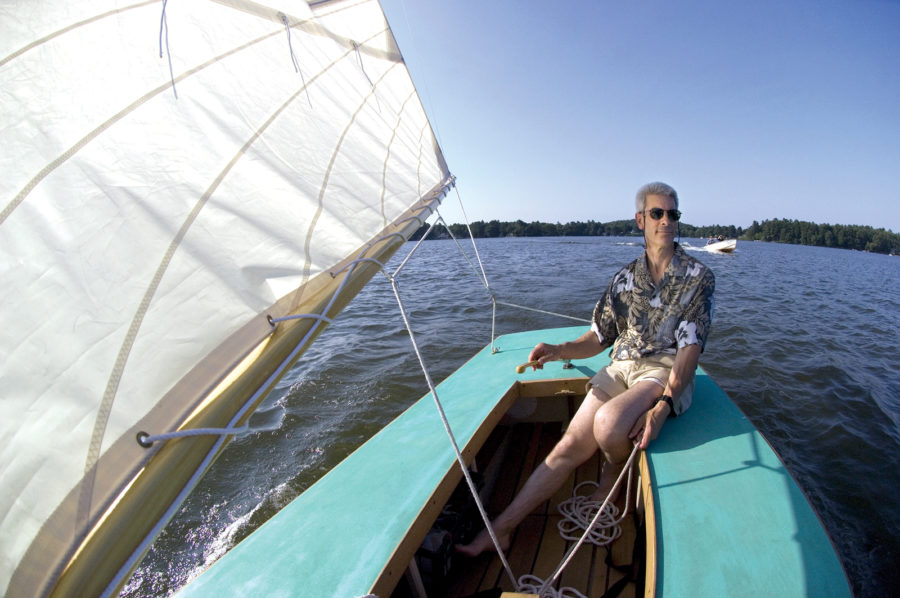
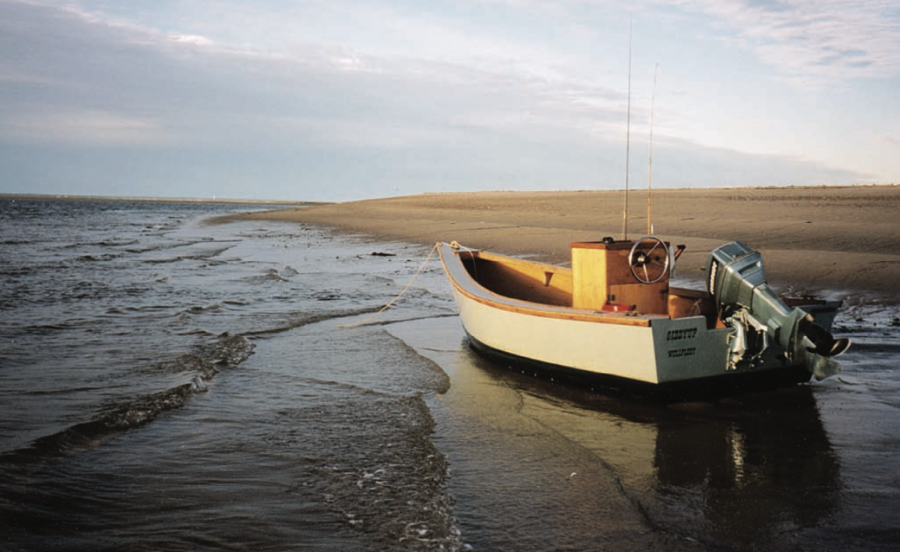
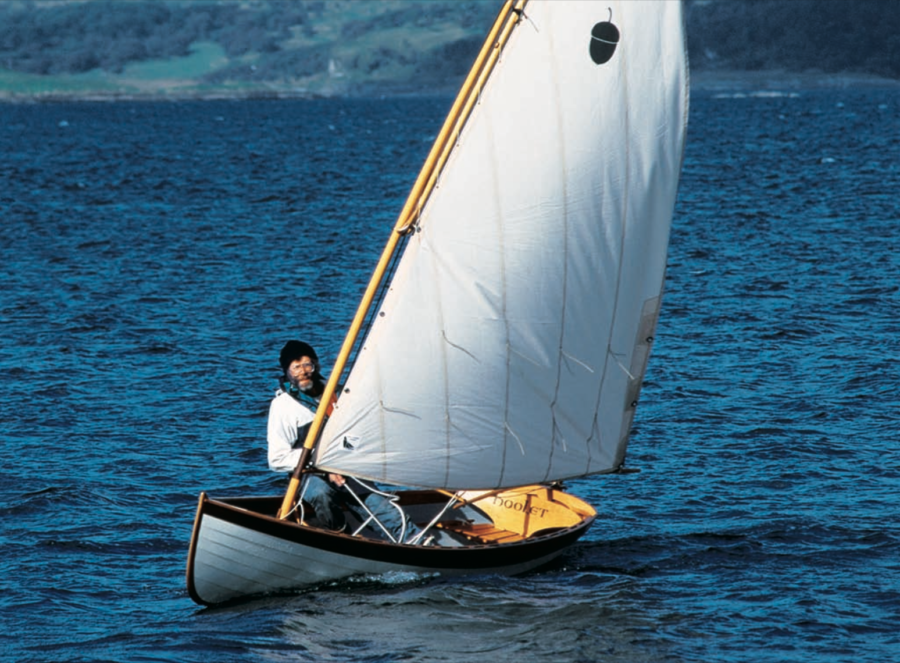
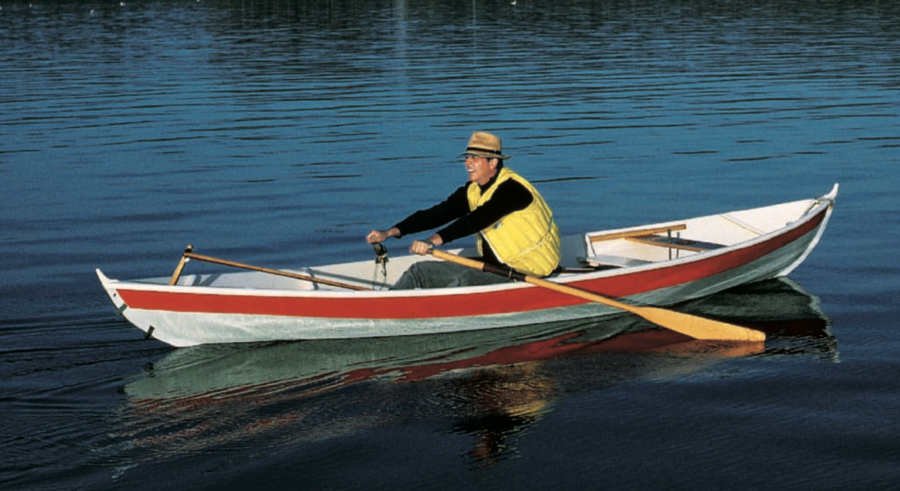
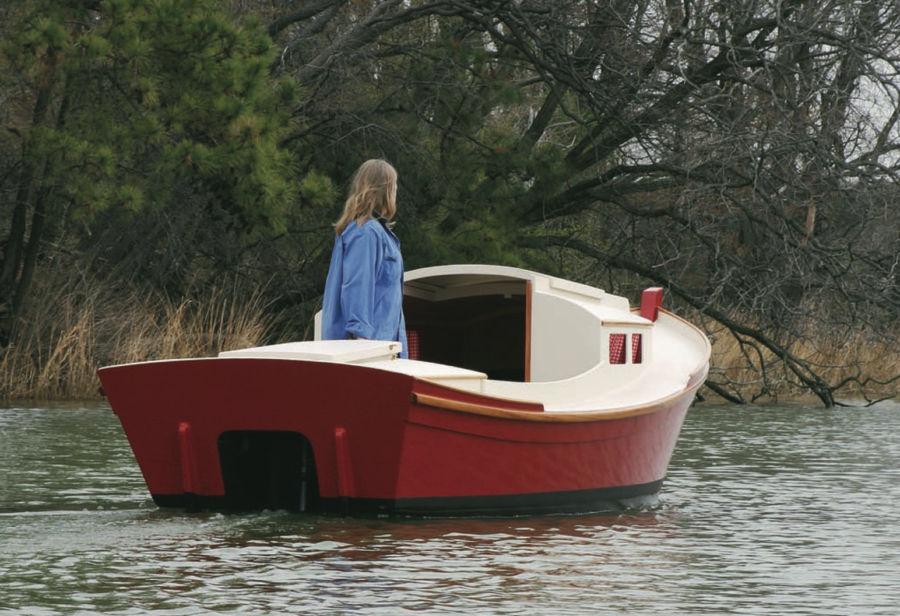
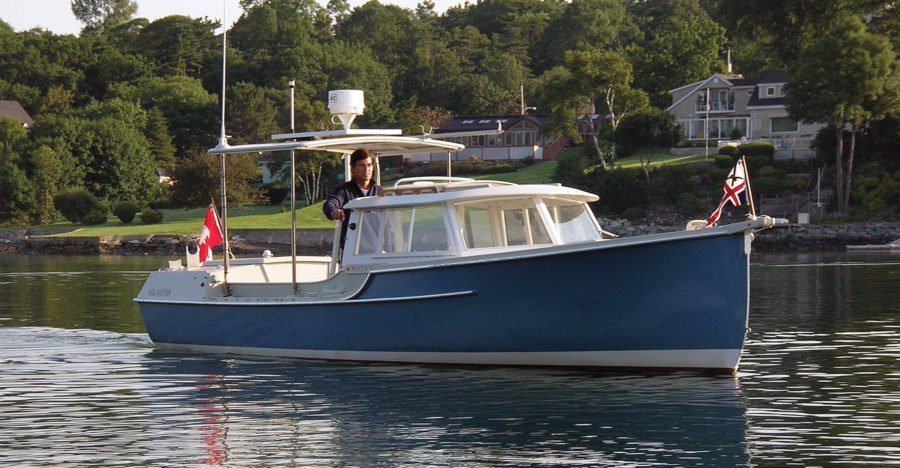
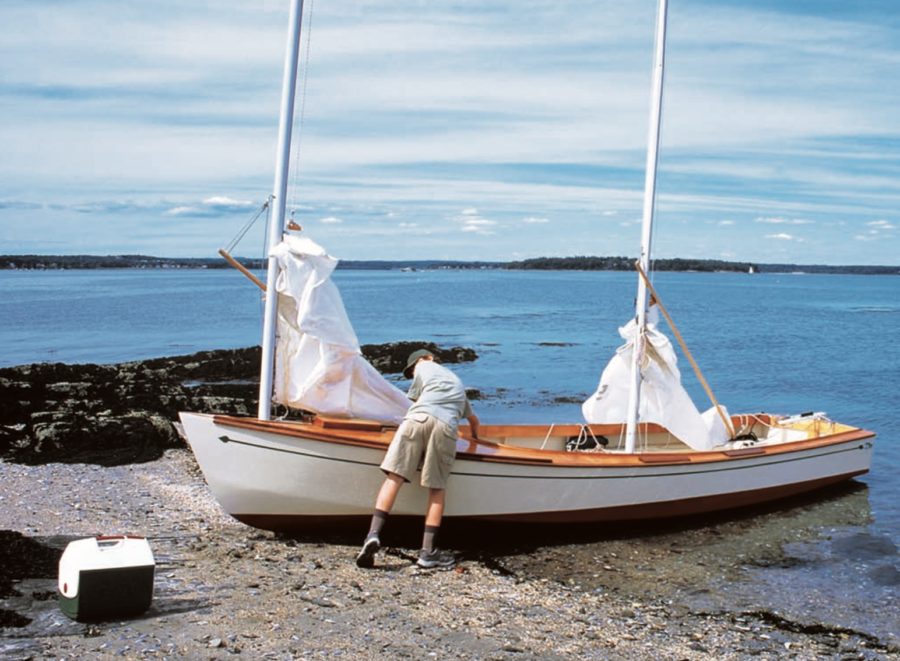
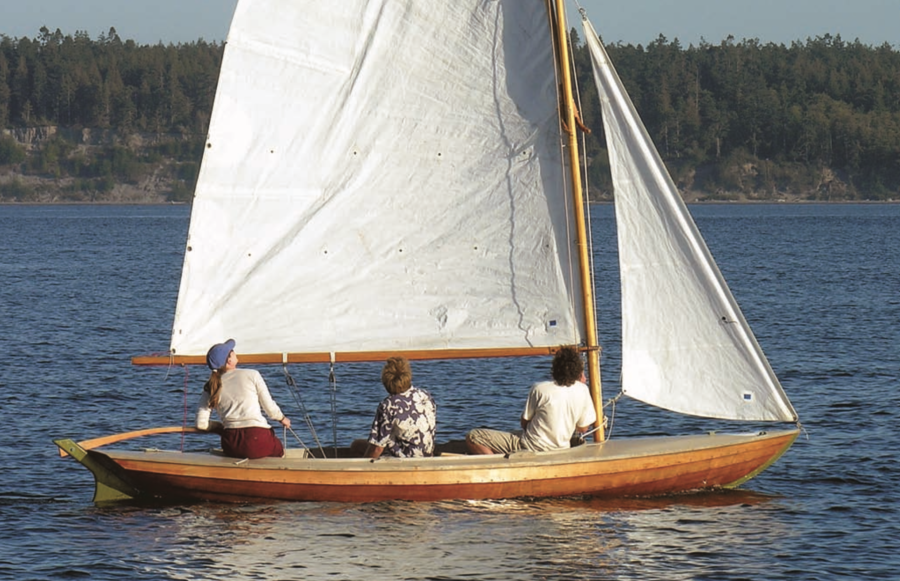
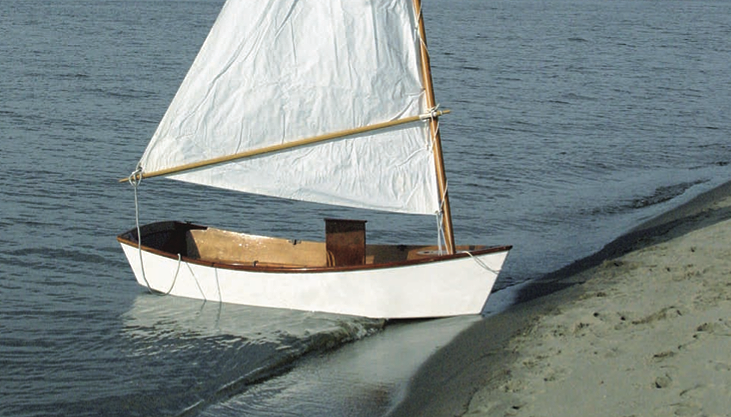
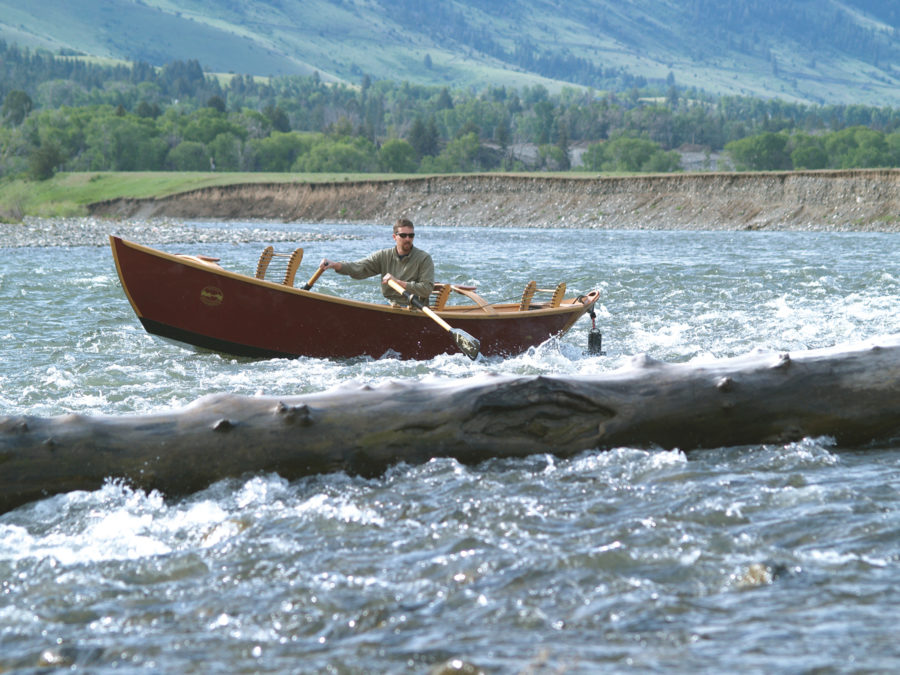
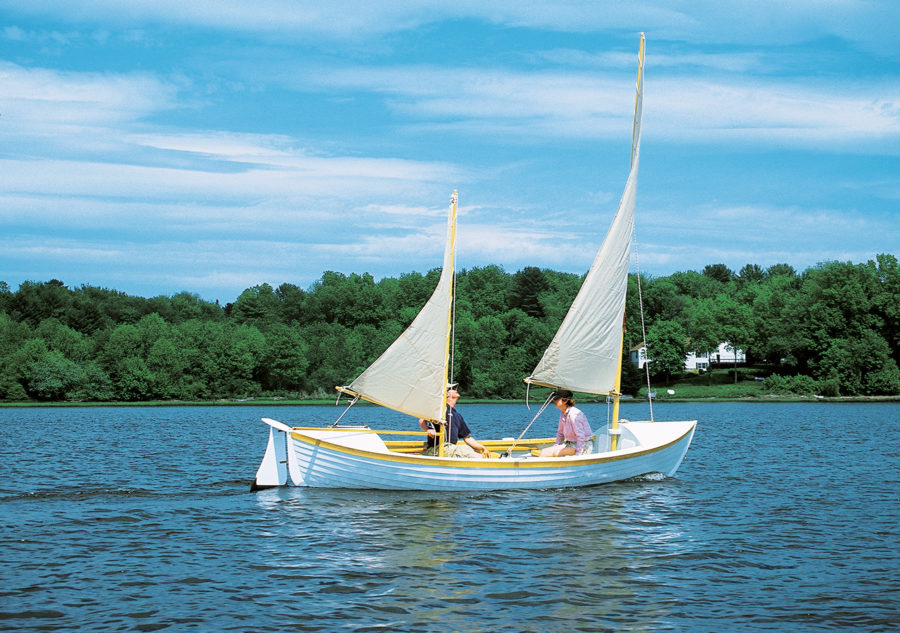
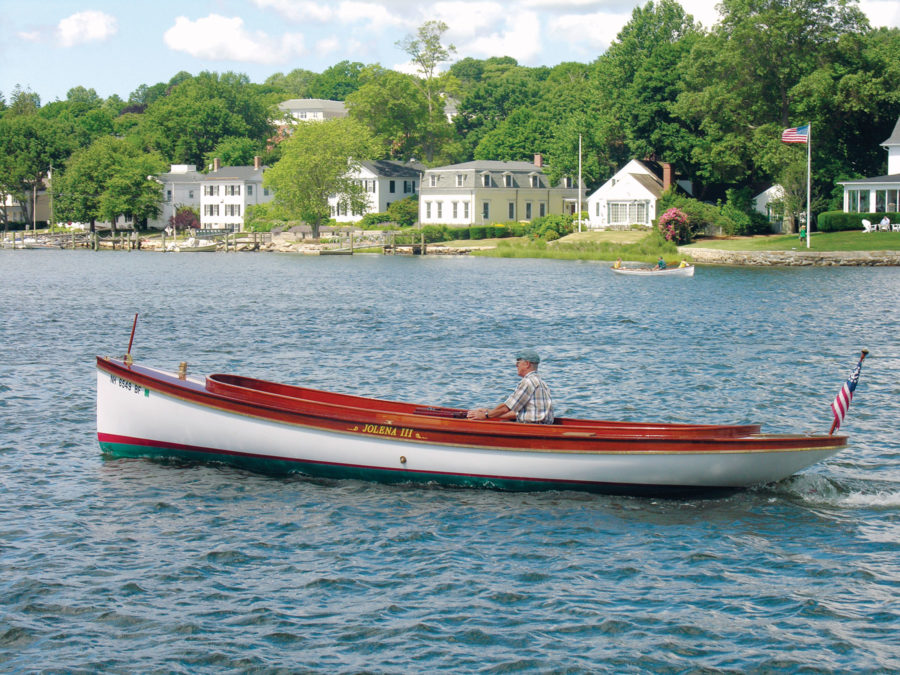
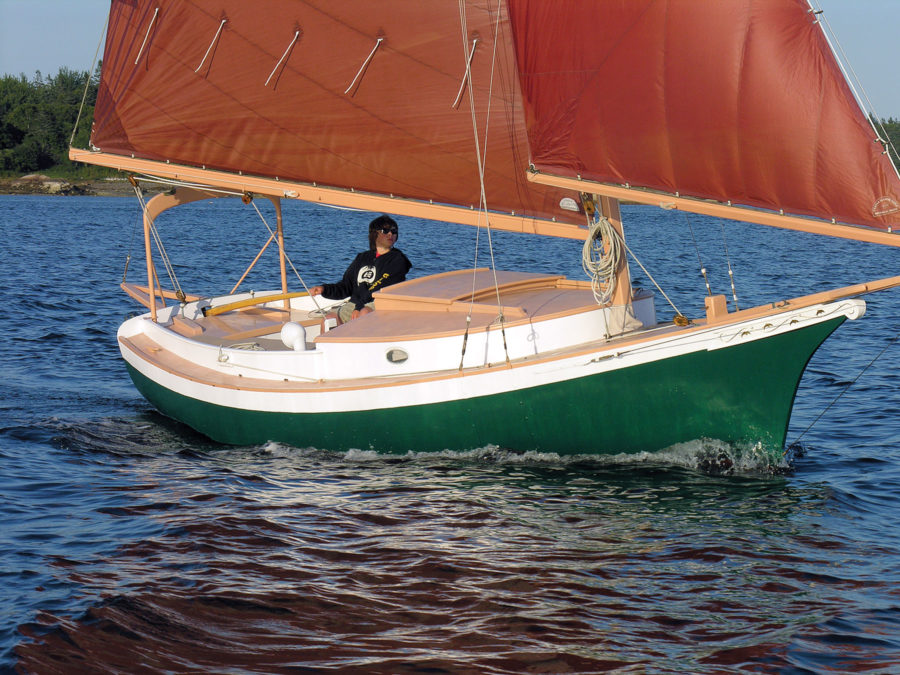
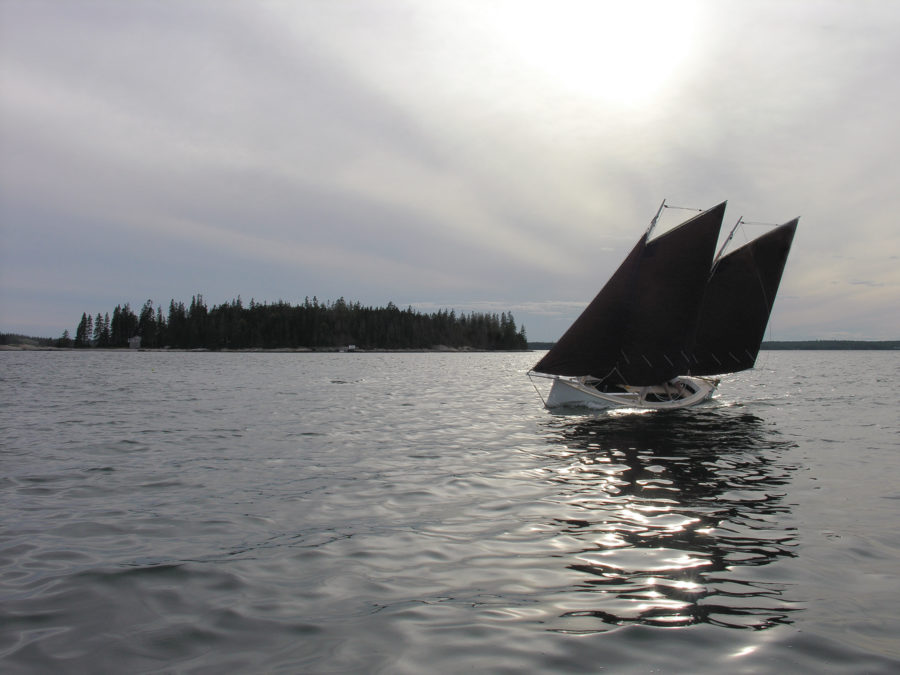
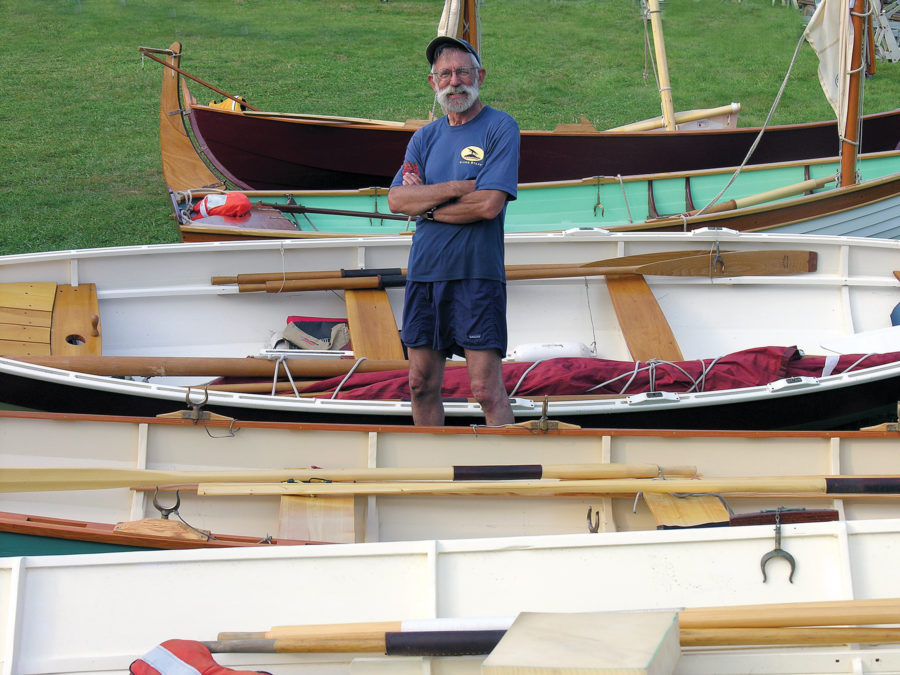
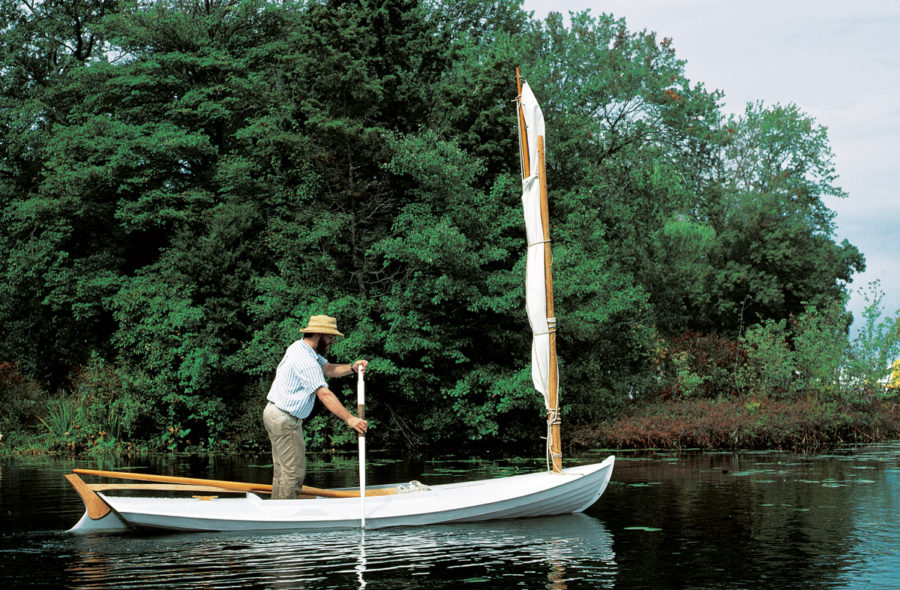
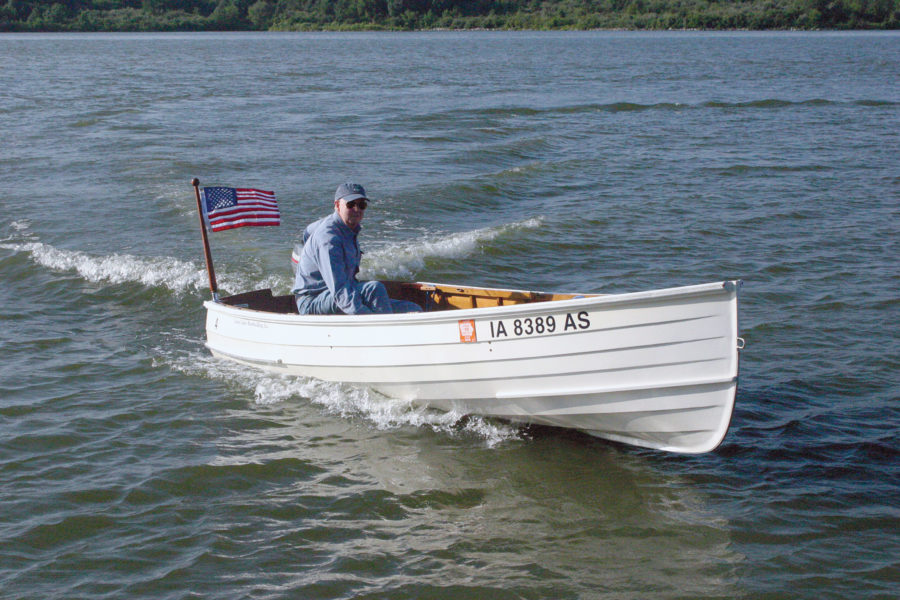
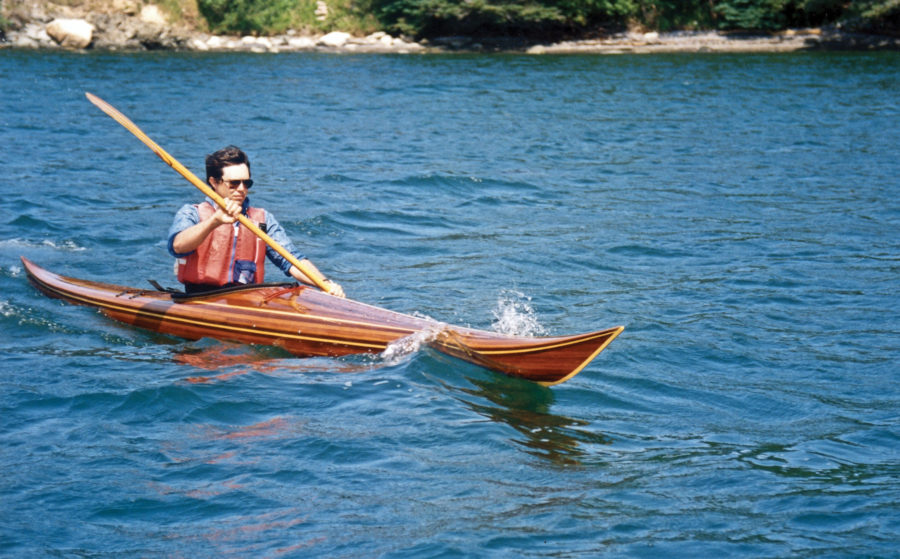
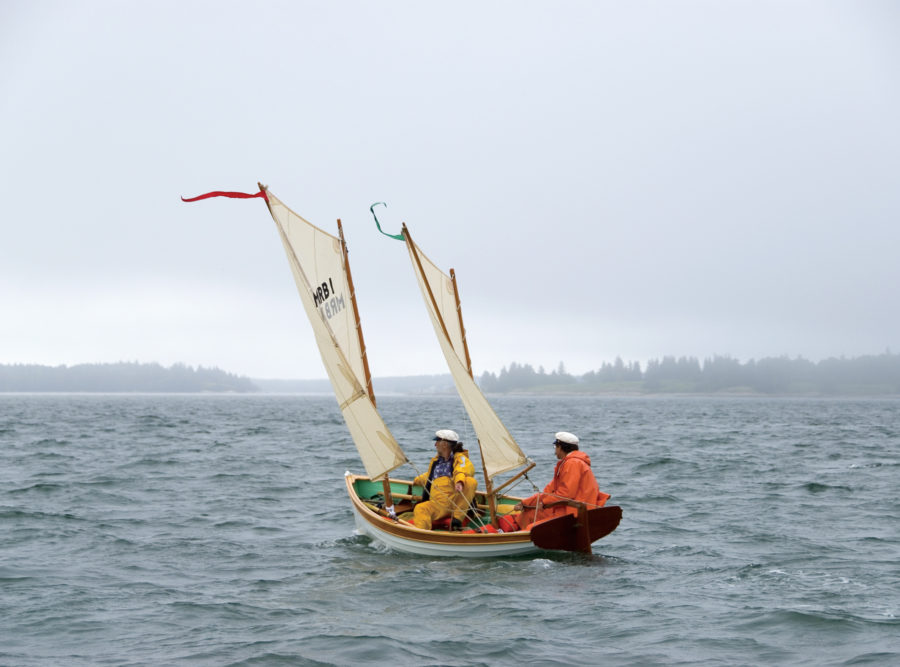
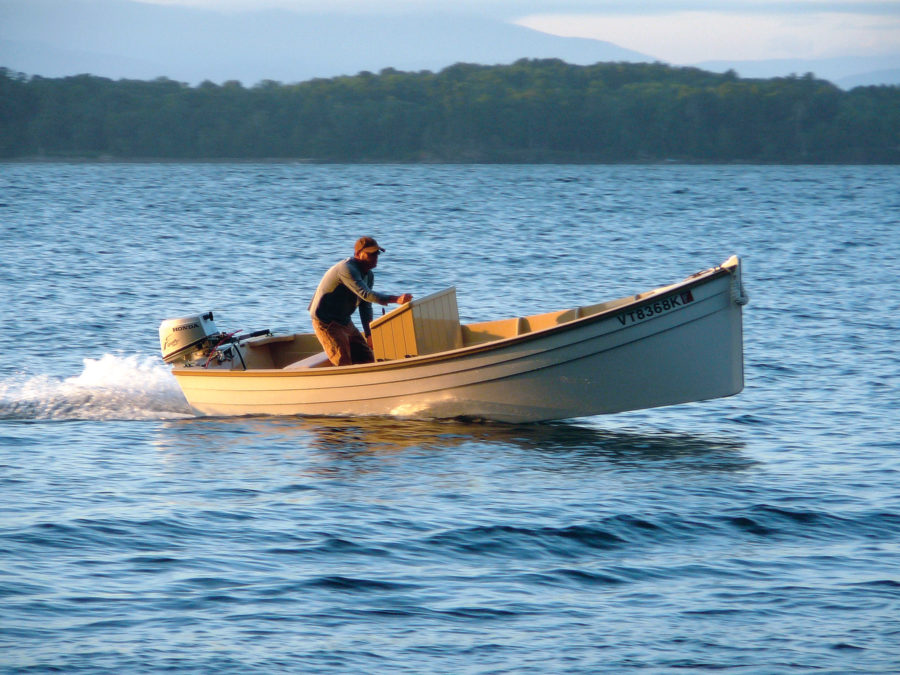
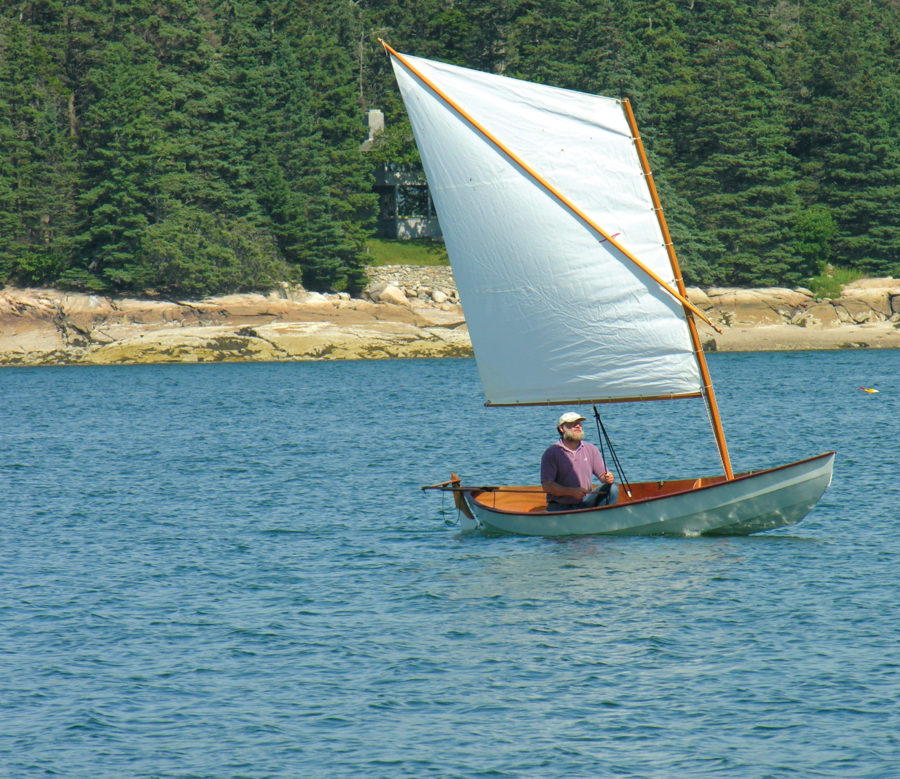
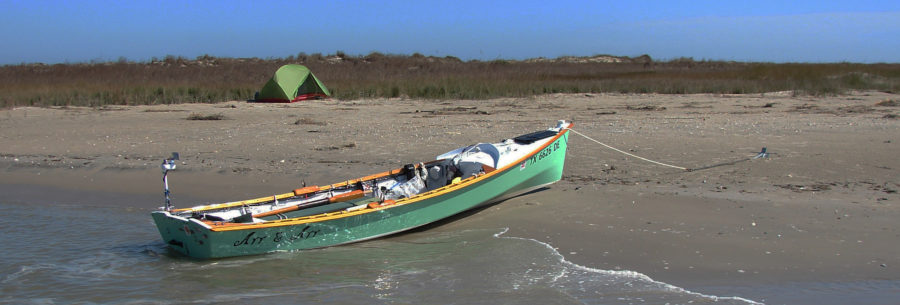
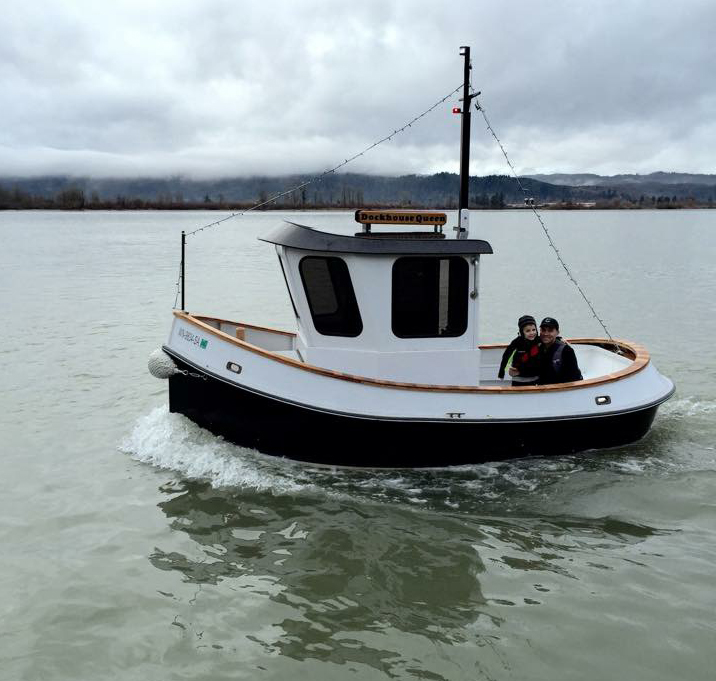
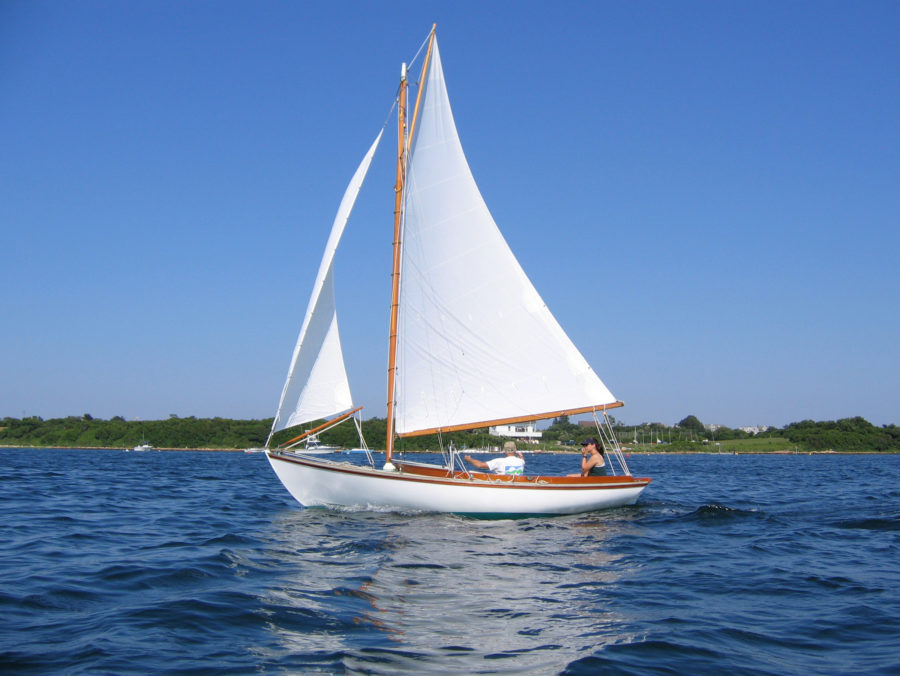
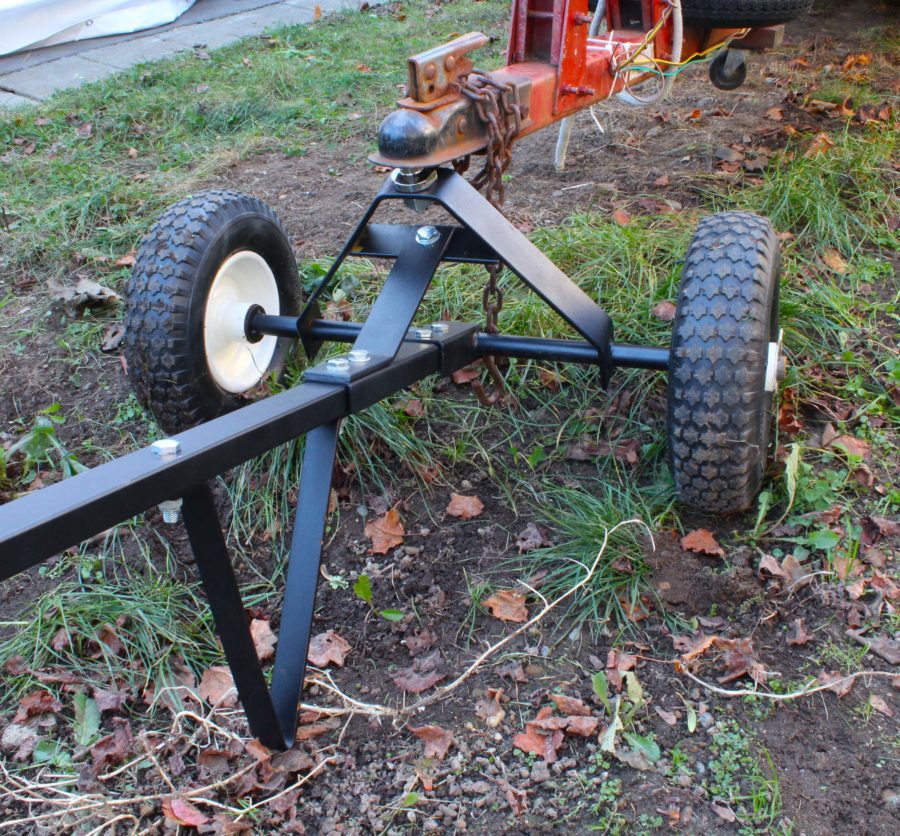
That is a very pretty little boat. What is the reason for having two locations to step the mast?
Hi Clifford. I believe it is because two different sail configurations are specified.
1. 33-sq-ft leg-o’-mutton
2. 37-sq-ft sprit sail
Depending on each sail and where the center of effort (COE) is, it probably requires a different location.
Hi. Is there a full set of building plans available for this little Weekend Dinghy? If so, what is the cost including postage to the UK?
There’s a book, Good Skiffs by Karl Stambaugh, with plans.